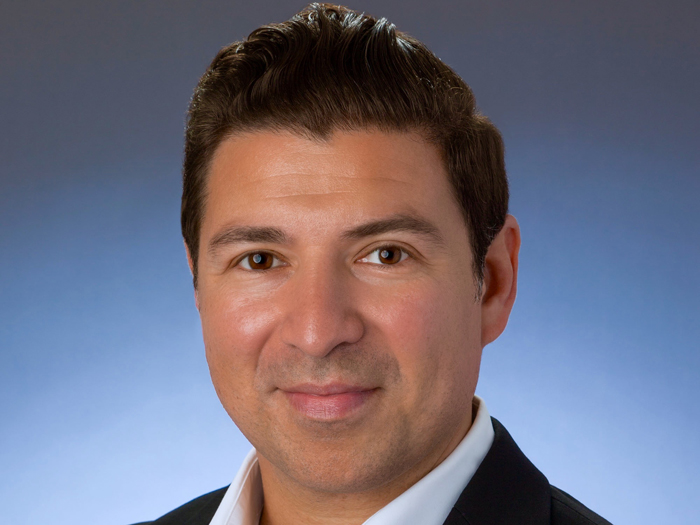Emerging Risk
A Rising Tide

Skyrocketing wage and hour claims motivated the birth of new Bermuda-based stand-alone insurance coverage to manage the trend, especially for large U.S.-based employers.
Led by Aon, which first entered the market a year ago, companies including Markel Global Insurance (which acquired the former insurance division of Alterra Bermuda Ltd. on May 31), Allied World/AWAK, Beazley, Chubb and Marsh all recently entered the field, citing the growing need for wage and hour coverage.
On June 20, XL Group’s Bermuda Professional Lines Unit announced it was launching its own stand-alone Wage & Hour Liability Insurance product for “Fortune 500 companies and other large employers potentially exposed to employee compensation and classification disputes.” Prior to that, it handled wage and hour action through its Bermuda office.
Seyfarth Shaw LLP, a New York-based law firm that charts these claims, reported that for the year ended March 31, federal wage and hour claims filed under the U.S. Fair Labor Standards Act hit an all-time high of 7,831, up 11 percent from 7,064 in the previous 12 months. This trend continues a rising path over the past three to five years for these claims, Seyfarth reported.
According to the law firm, the bulk of these claims allege misclassification of employees, uncompensated “work” performed off the clock and miscalculation of overtime for non-exempt workers.
In addition to greater federal and state surveillance of wage and hour activity, Seyfarth’s Lorie E. Almon, New York-based co-managing partner of the firm, cited several factors contributing to the significant increase in such cases:
* The weak economy may have created situations in which more employees are out of work and they remain unemployed for longer periods of time. As a result, workers may be more tempted to file claims against former employers than they would be if new jobs were easier to secure.
* There have been a number of highly publicized, big-dollar settlements of wage and hour cases, raising the profile of wage and hour litigation which seems to beget more litigation.
* The profusion of new technologies has made it more difficult to define when a worker is on the clock or off the clock.
The FLSA laws were drafted when people had to report to a specific office or facility to work, Almon noted. “There were no fax machines then, let alone cell phones, laptops, Wi-Fi or BlackBerries,” she said.
Phil Norton, Chicago-based president, Professional Liability division of Arthur J. Gallagher Risk Services Inc., said the surge in new wage and policy forms is a case of the insurance industry responding to a high-profile trend.
“Once somebody gets a successful lawsuit accomplished, especially a large one, then all of a sudden word spreads and the attorneys are in it to make money, representing classes in particular, so they are driving the train.”
Norton cited the landmark 2008 wage-and-hour class-action case in which 63 cases pending in federal and state courts in 42 states were merged into a class-action lawsuit against Wal-Mart. The company agreed to pay out $680 million in what became a new high-water mark for these claims.
The dozens of wage-and-hour allegations against Wal-Mart included forcing employees to work unpaid off the clock, erasing hours from time cards and preventing workers from taking lunch and other breaks that were promised by the company or guaranteed by state law, Norton observed.
The size of the payouts by Wal-Mart meant that the industry had to come up with separate coverage for wage and hour claims.
“It [wage and hour] is just a small piece of the whole picture and yet recently it’s become the most expensive piece, so the two coverages [EPL and wage and hour] had to be segregated,” added Norton, whose firm has been selling the wage and hour insurance for the past four months through such Bermuda markets as XL and Allied World/AWAK.
Jim Gray, Markel Global Insurance’s Bermuda-based executive vice president and chief underwriting officer, Professional Liability, said there is another factor leading to an increase in wage and hour claims. “Since wage payment practices at companies are usually governed by some policy guidelines, the chances that many employees suffer the same kind of violation is high, and a class action is easier to approve than for discrimination cases,” Gray said.
Adeola Adele, New York-based U.S. Employment Practices Liability product leader for Marsh Inc., which works with its Bowring Marsh specialty broker in Bermuda on Marsh’s new wage and hour product, said, “Until recently, employment practices liability insurers had resisted providing any type of coverage for wage and hour claims, typically citing concerns over frequency, severity and uninsurability of the actual wages owned.”
Marsh’s new wage and hour solution is aimed at companies of 4,000 employees or more and involves a retention of $5 million. Alterra was the first market to raise its hand to work with Marsh on the product, followed by XL and Allied World/AWAK and then others.
“Increasingly we are getting interest from additional Bermuda and London markets, as well as some domestic markets that previously said they didn’t feel comfortable with the exposure,” Adele noted, adding that this is a case where carriers are looking for new business to increase their top-line numbers.
Like others, Adele points to increasing activism on the part of the U.S. Department of Labor and various state labor departments when it comes to wage and hour issues.
“I think because the exposure isn’t going away we’re going to see more markets that want to participate in this,” she noted.
At the same time, she said, “a lot of the case law coming out now around this issue is favoring employers and therefore employers are no longer feeling the need to settle for exorbitant amounts and they’re now actually defending claims more vigorously. I think that is impacting the severity of the settlement amounts, although the cost of defense is increasing.”
Adele said small-sized companies may believe the risk is not appropriate for them at this point. “That said, we believe every risk is unique and where possible we are seeking lower retentions on behalf of clients,” she added.
Marsh began working on its product in 2007 when Adele joined Marsh in her current position. “I would say we kicked the program into full gear in 2010 in gathering data and starting preliminary conversations with markets about whether they would be willing to consider doing this as an endorsement to an EPLI policy,” she said.
Markel Global Insurance entered this market six months ago with a stand-alone product for large companies. The product has up to $25 million in capacity per policy with a retention level of $1 million or more for larger clients.
“We’ve seen most of our submission activity through Aon, Marsh and Willis, although we’ve seen a lot of interest by other brokers representing other distribution points, but I think that’s fairly typical of the Bermuda wage and hour community,” said Markel’s Gray.
As for the outlook for rates in this emerging area, he noted: “Given that this is a brand new product, there really isn’t a baseline with regard to market-rate change. We’re still underwriting each account on an individual basis. I would say that in general in professional liability lines we’re seeing a stabilization of rates for large accounts across the boards.”
Aon Risk Solutions’ EPLI National Practice Leader Tom Hams said he perceived a need for wage and hour insurance because every year many of the large clients for which he handled EPLI were talking about how they would buy the product in a heartbeat if it had wage and hour coverage.
“The thing that really drove it home for me was that the markets were not doing anything to respond to the need,” he said.
“Nobody was doing the work to figure out if it could be done. They just assumed the exposure was so bad that they wouldn’t underwrite it, so nobody was gathering the claims data. And therefore potential clients didn’t want to face the exposure.”
Hams said he needed to go through a several-step process in order to be able to go to market, a process that took five years, beginning with approaching XL.
“First, we had to accumulate a claims database,” recalled Hams.
“Then we had to build the mousetrap. I started with Aon’s actuaries. With them, I was able to show there was a predictable curve to it. Then I brought in some of our law firm partners to explain how you could differentiate risk.”
The key was getting the defense lawyers who were experts about the wage and hour laws to think in insurance terms, Hams said.
“The lawyers didn’t understand that losses were OK as long as the insurance companies could set the appropriate deductibles and charge the appropriate amount of premium in order to be profitable,” he noted.
Once Hams could show a potential client there was a predictable risk from a data perspective, and could show a way to differentiate and underwrite the risk, “that’s what ultimately won the day,” he observed.
At present, the Aon wage and hour product is a stand-alone policy for companies with 5,000 or more employees with a retention level of above $1 million. The policy provides coverage for defense and indemnity costs whether the organization settles out of court or goes to trial.
An Eventual Merger
For now, Hams said, clients will need to buy wage and hour coverage under a separate policy from their existing EPLI policy. “But I think over time EPLI and wage and hour coverage will merge and you’ll have a one-stop E&O coverage for HR issues.”
Bruce Simmons, Hartford-based vice president of XL Group PLC, said the most important thing taking place in the wage and hour market today is education.
“The legislation and the laws and statutes are changing overnight, so I think what it really comes down to is employers knowing the classification of workers as well as their own state as well as federal laws,” he said.
Like many other observers of the wage and hour scene, Robert A. Boonin, a shareholder practicing in Butzel Long’s law office in Ann Arbor, Mich., sees a continuing tough regulatory climate.
“This is a huge initiative, not only just by the DOL but by the IRS and all the states,” he said. “They’re not just going to be complaint driven anymore. In some cases they are threatening, or already have attempted, to get damages through the investigative process.”










